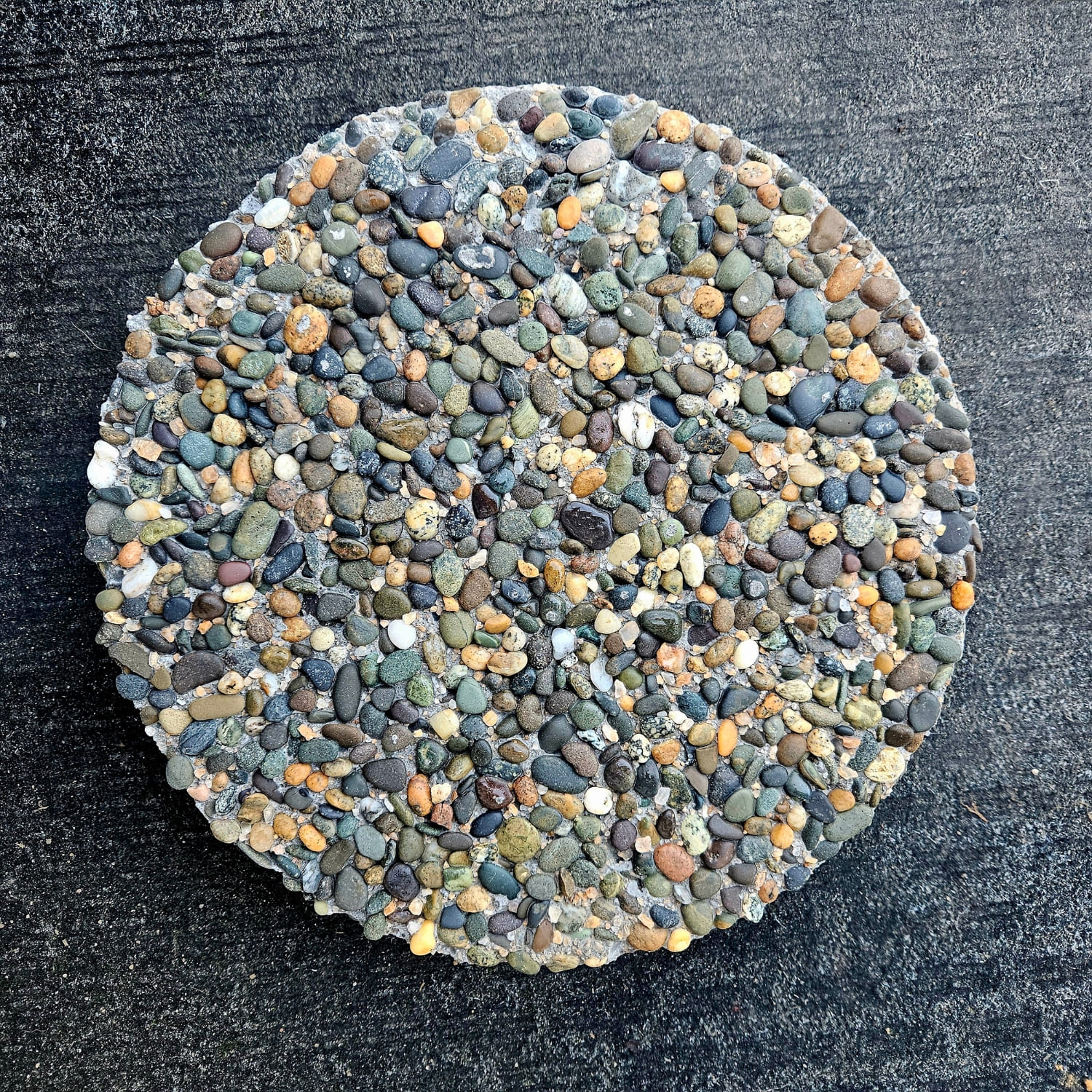Because they are available in a range of sizes, finishes, and colours, round pavers can suit everything from modern outdoor living spaces to relaxed, cottage-style gardens. They are also highly durable, especially when made from wet cast concrete, and can handle New Zealand’s wide range of climates — from coastal salt air to frosty inland winters.
Using round pavers creatively can transform your outdoor space into a place that feels unique, inviting, and full of character. Here are some ideas and tips for making the most of them.
Why Choose Round Pavers?
Round pavers are different from standard paving options because they break away from straight lines and sharp corners. They’re perfect if you want a design that feels more organic and blends naturally into a garden. They also work well in small spaces, where a little curve can make the area look bigger and more interesting.
They’re also practical. Being precast concrete, they can stand up to weather, foot traffic, and the everyday wear and tear of family life. When sealed properly, they resist stains and are easy to clean, making them a long-lasting choice for homeowners.
Stepping Stones Through a Lawn
One of the most popular uses for round pavers is as stepping stones across grass. This creates a simple path that connects spaces like a deck to a shed, a patio to a garden, or a driveway to a front door.
- Spacing: Place the pavers one natural stride apart (about 600–700mm) for comfortable walking.
- Sizes: Larger round pavers (400–600mm) work best for this purpose.
- Look: The round shape creates the impression of a trail of stones, which feels less formal and more playful than a straight-edged path.
Using stepping stones also helps protect lawns from wear and tear, as people will naturally walk on the pavers rather than trampling the grass.
Pathways That Curve Naturally
Straight lines don’t always suit garden spaces. Round pavers can be laid in curves, creating pathways that feel like they’ve grown with the garden itself. This works especially well in bushy or native planting schemes, where a winding path feels in harmony with nature.
You can use the same size pavers for a neat, even path, or mix different diameters for a more relaxed look. Adding small ground covers or gravel around the pavers helps integrate them into the landscape.
Garden Bed Features
Round pavers aren’t just for walking on. They can also be used as decorative features within garden beds. A single large paver placed under a feature pot creates a focal point, while smaller ones can be dotted among planting as accents.
They can also be used to create a series of “islands” within gravel or mulch beds, giving you places to stand when weeding or watering without disturbing the plants.
Patio Accents
If you already have a square or rectangular patio, round pavers can break up the monotony. They can be laid as a circular inset within a larger paved area, creating a visual highlight or a dedicated spot for outdoor furniture.
In larger outdoor living spaces, clusters of round pavers can be used to create informal seating areas or fire pit surrounds.
Combining Round and Square Pavers
Round pavers don’t have to be used on their own. They pair beautifully with traditional shapes. For example:
- Use square pavers for the main patio area, with round pavers leading off into the garden.
- Mix and match to create mosaic-style designs.
- Place small round pavers between larger rectangular slabs for contrast.
This combination creates depth and interest, and can help tie together different parts of a property.
Children’s Play Areas
Round pavers are a great addition to spaces designed for kids. Their shape feels softer and less rigid, and they can be used to create playful stepping stone trails. Painting or staining them in different colours can make them even more fun, while still being durable enough to handle years of activity.
Decorative Landscaping Elements
Round pavers can also be used vertically rather than flat. For example, you can sink them halfway into the ground as garden edging or arrange them as part of a retaining wall design. Their curved edges stand out from typical square blocks, adding unique character.
Choosing the Right Size and Finish
- 300mm diameter: Best for small accents, edging, or children’s play trails.
- 400–500mm diameter: Ideal for stepping stones and garden paths.
- 600mm diameter: Perfect for feature pieces or large pathways.
Finishes also matter. Smooth concrete gives a modern look, while pebble or exposed aggregate blends well with natural surroundings. Darker colours can create contrast, while lighter shades reflect sunlight and brighten shaded areas.
Installation Tips
- Always prepare a solid base with compacted gravel or sand.
- Ensure drainage is good, especially in damp New Zealand gardens.
- Seal the pavers to protect against stains and UV fading as long as they are not exposed pavers which don’t need sealing.
- For lawns, set the pavers slightly below the grass line so they’re easy to mow over.
Long-Term Care
- Sweep and rinse regularly.
- Remove moss and weeds quickly.
- Reseal coloured pavers every three to five years depending on wear.
Adding Value to Your Home
Creative use of round pavers not only improves how your garden looks, but also adds real value to your property. Outdoor spaces are a key selling point in New Zealand homes, and a well-designed path or feature can make a strong first impression.
By experimenting with different sizes, finishes, and placements, you can turn a standard garden into something truly memorable. Whether you want a winding path, a playful trail, or a modern design accent, round pavers offer endless opportunities for creativity.

